Virtual Reality Art Piece
monumoment
A portmanteau of monument and moment, monumoment is a VR piece creates a monument dedicated to the audience, memorializing the moment the audience engages with the work. I consider it a kind of sculpture and sound installation inside of a virtual reality space.
Demo Video
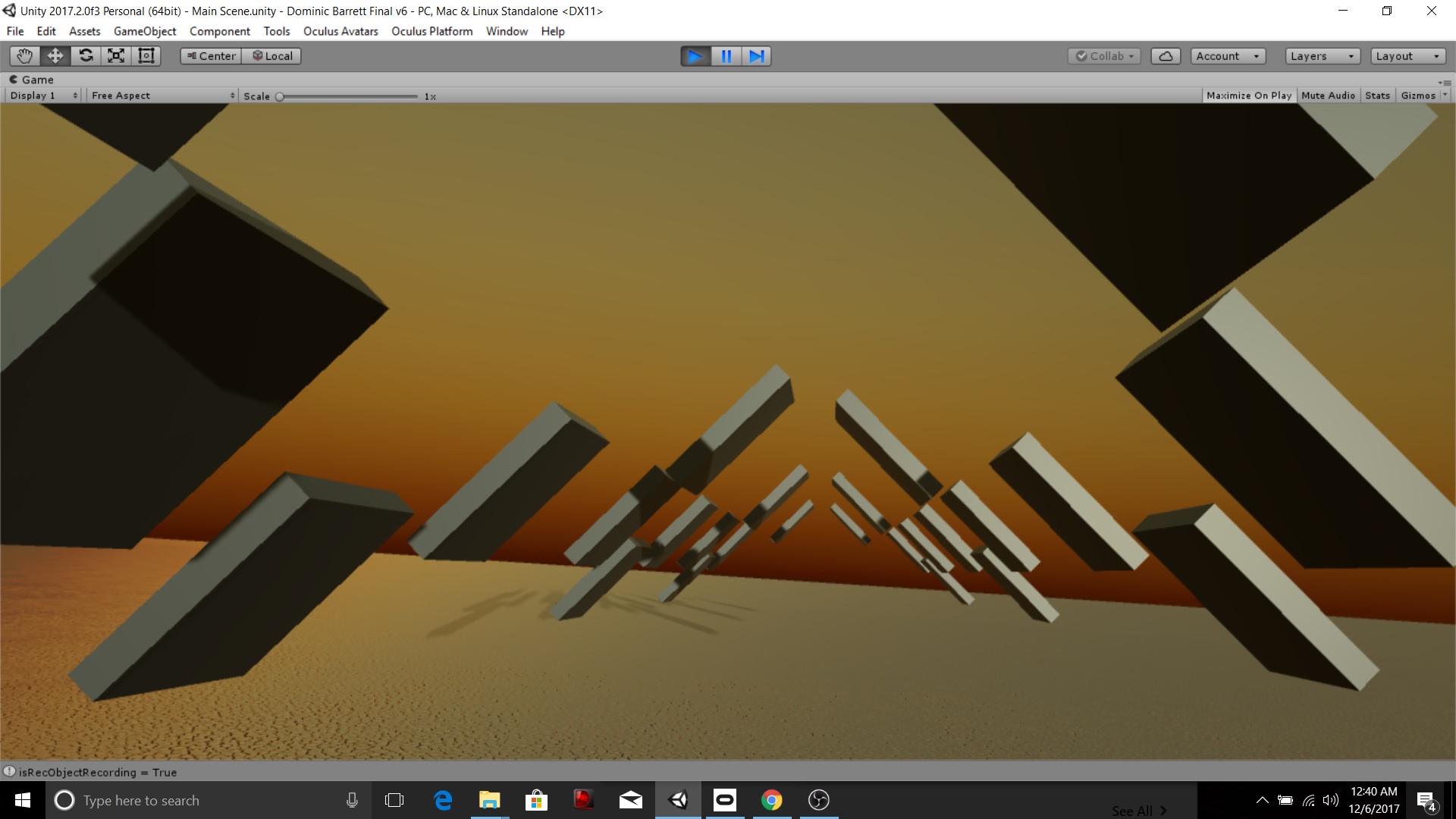

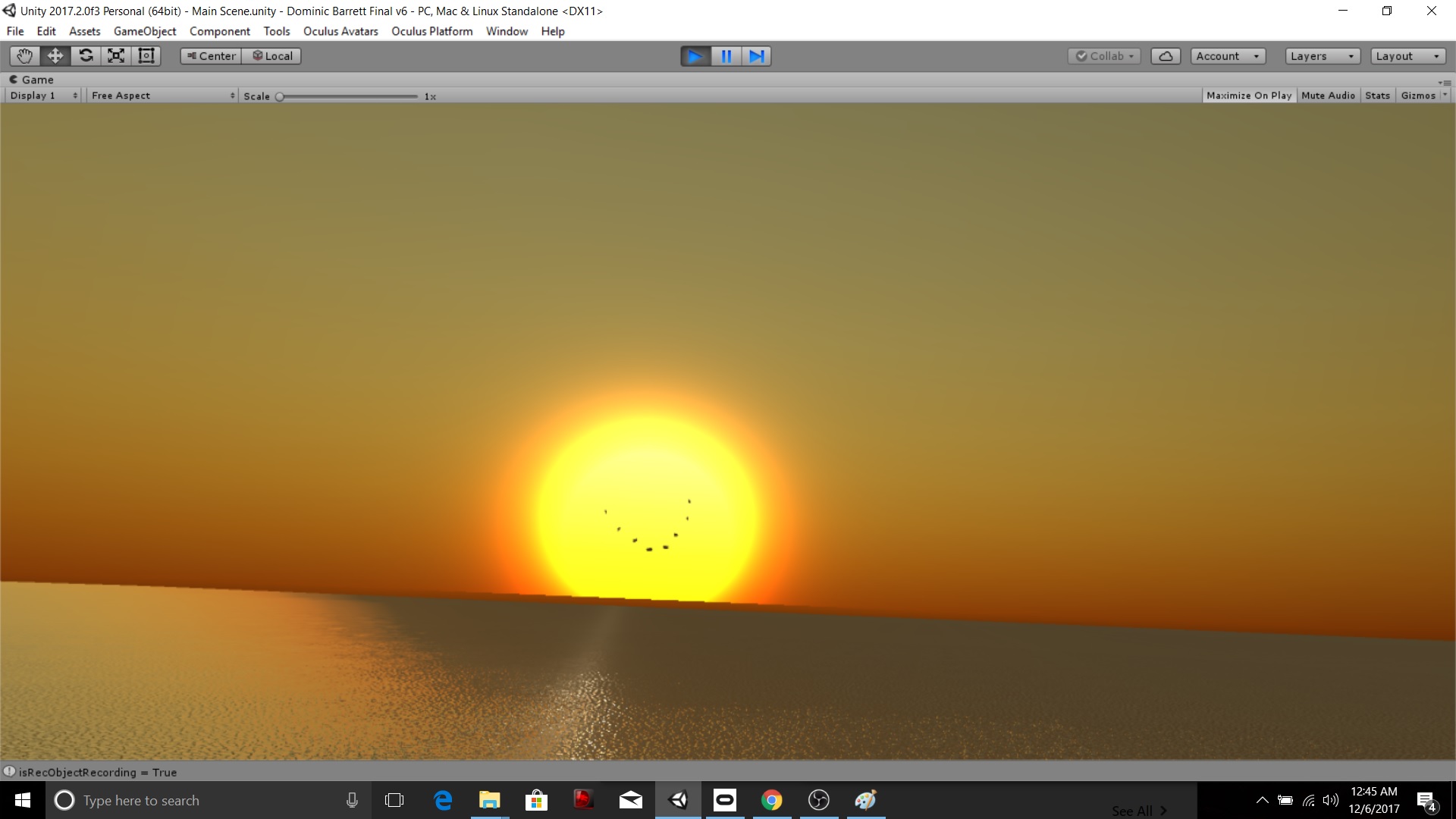
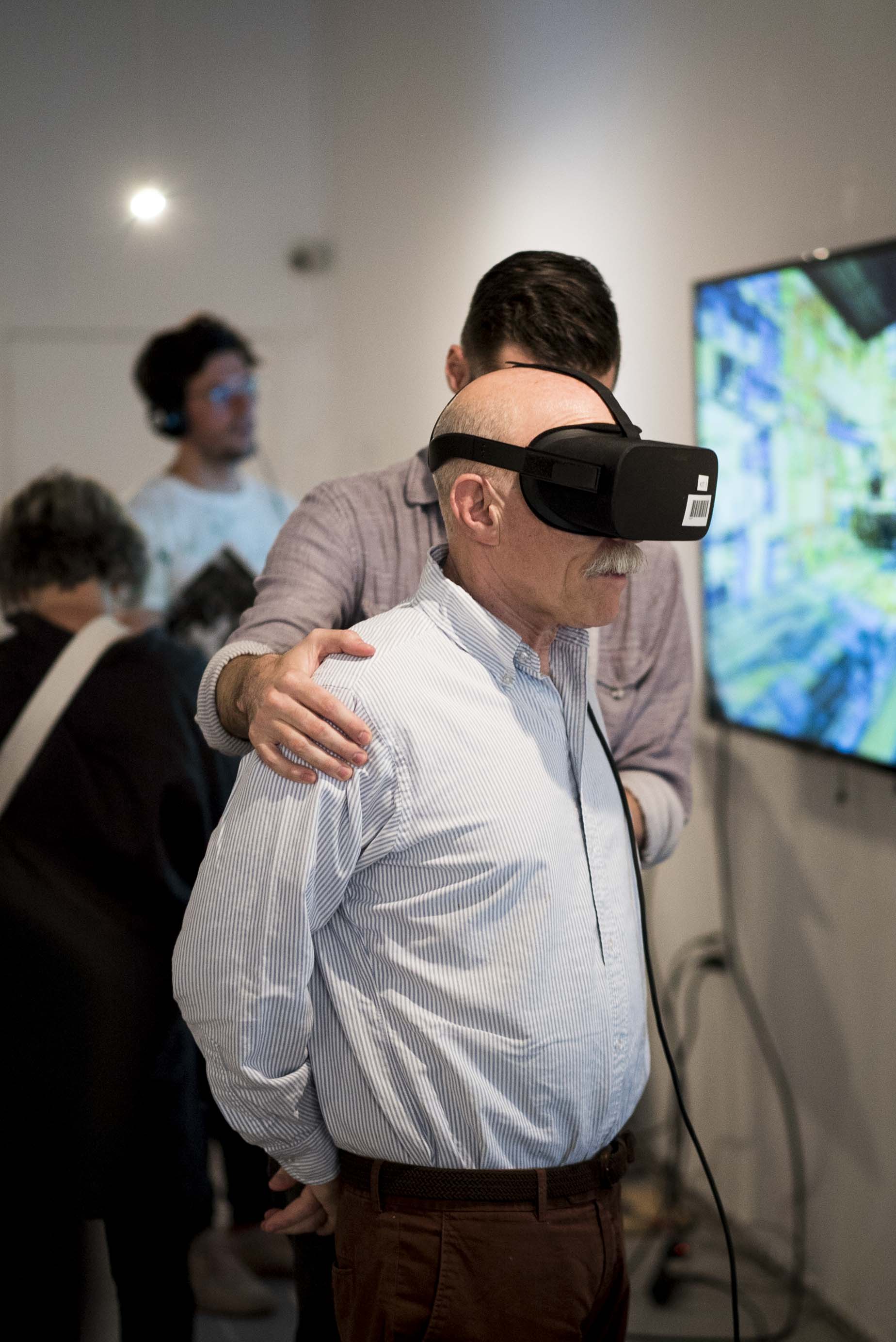
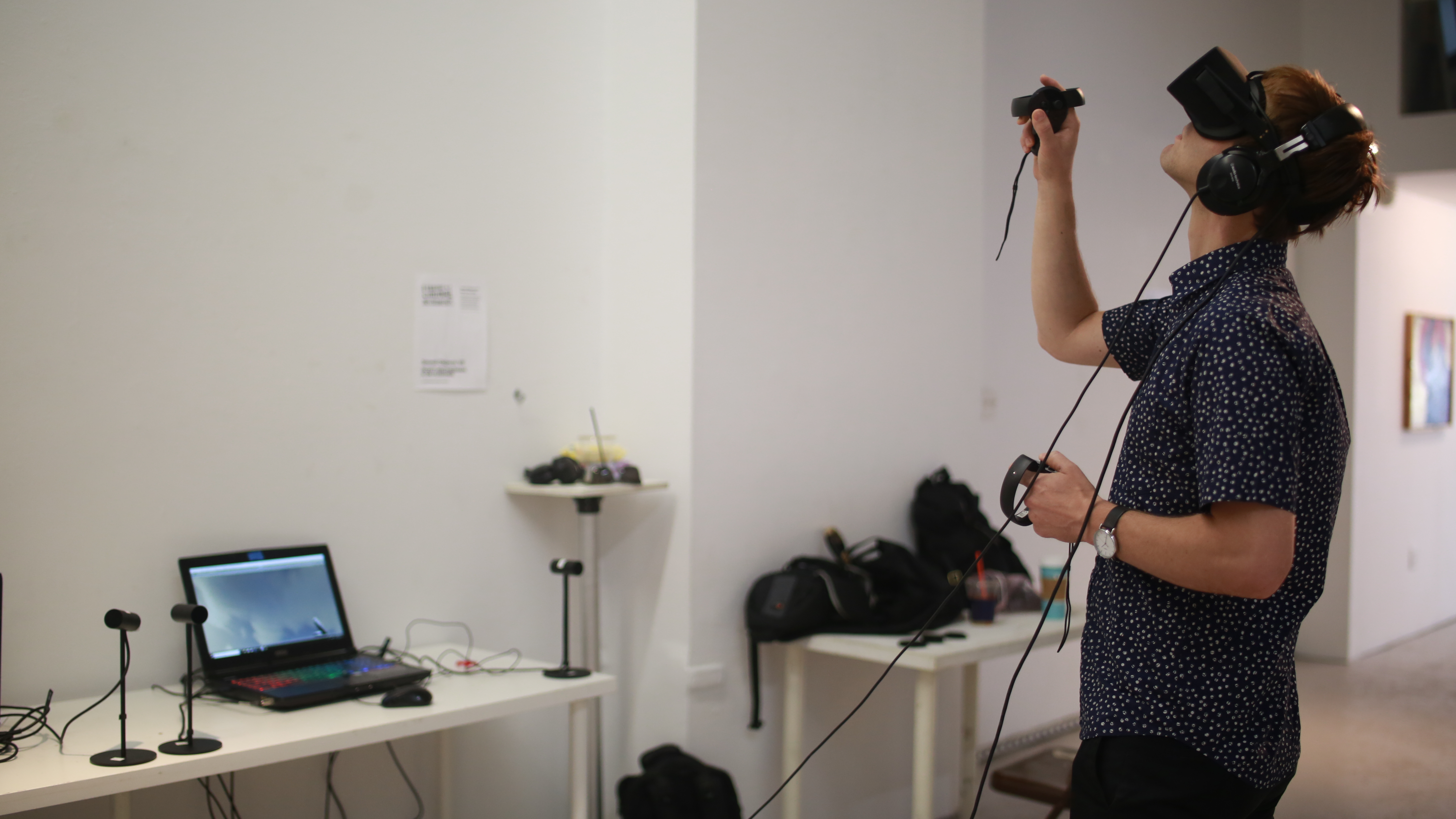
The technique involves recording audio from the user, using the Oculus Rift’s built in microphone. When a button is held down, the user can record themselves speaking. Upon release, that audio clip is saved in the program. I developed a system inside of Unity to do the following:
- Take the audio clip, and distribute it to every sculpture that is made (every sculpture consists of one or more boxes)
- For every box inside of the sculpture, the audio is sliced into that many pieces. A sculpture with four boxes will slice the audio into four pieces. 8 boxes, eight slices. 100 boxes, 100 slices. etc.
- Each slice of audio is assigned and attached to each box and loops infinitely. Each box’s audio settings are configured as spatialized audio, so that the farther away the box is, the more quiet it becomes.
A voiceover of instructions is *almost* AMSR style delivery and quality. Perhaps NPR level. I wanted something very close to the microphone, very quiet and calm. This audio is *not* spatialized. Bass is boosted, adding a bit of warmth. With these qualities, I hope to make it feel like I am inside the audience’s head.
And the voice over is me directly communicating to the viewer. First, I explain what is going on: The audience is in a VR space, they can record. Recordings can be put inside of shapes. Recordings can be split up and put into multiple shapes. Shapes can move. When they move in certain ways, we have a visualization of tiny moments of audio. If the user is looking at 16 blocks, and then 15 disappear, they can recognize and appreciate that they are looking at 1/16 of a second or two of audio.
The message: small snippet they had literally been listening to the whole time, but not specifically appreciating.
After this technical description of how the audio is being cut, I attempt to draw a connection to the audience with further narration. We can examine, and perhaps appreciate the beauty and strangeness of this tiny fraction in time. This is a moment. A moment given by their voice, to me the artist, in order to make the piece function.
The moment of engagement from audience to artist is then memorialized and presented to the audience as thanks.
If the button has been pressed, audio is in the piece, which means that the audience has given something of themselves (however small). This sentiment is important to me. On a larger scale, appreciation of moments and prompting meditation in ourselves and others is valuable. But even more specifically, I believe that the affordances of VR can make users very vulnerable. I am taking people’s voices, their names, and using it. They are strapping something onto their eyes, putting headphones on their head, all while knowing that I am standing right next to them. I imagine VR as people dipping their heads into other people’s art.
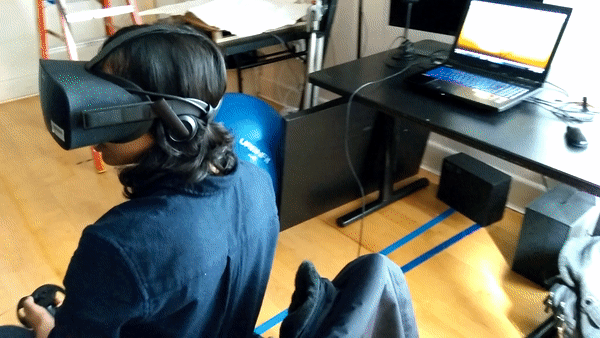
That is vulnerable. And while virtual reality has enough awe factor to let people put these concerns aside, I want to re-appreciate this vulnerability. Imagine my art piece was to ask people to put on a blind fold, ear muffs, put their head in a box, I would be recording them speak… and oh, by the way I’ll just be here standing next to you watching what you do. You know, just in case something goes wrong. In you go!
That would be asking a lot of the audience. This is something to remind ourselves of when we make VR experiences, and I thought it could be good fodder for a more uplifting consideration: thank you for even putting the headset on.
So with all this in mind, I consider this piece to be about the moment of engagement with art. I wondered if I was being a bit too tender, sappy, or “twee” on the messaging, but I really do feel this way. I very much appreciate that people engage with the things I make. I never want to take it for granted, I am thankful, and I consider it a special moment.